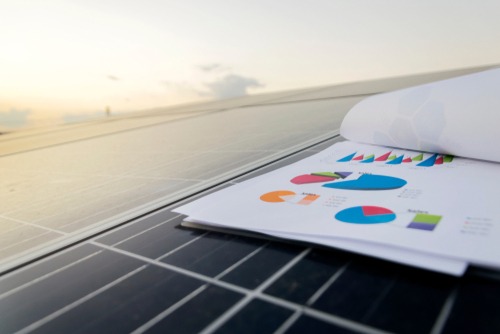U.S. solar market crosses 100 GW capacity even as costs rise

For the first time, the U.S. solar market surpassed 100 GW of installed generating capacity this week, according to the new U.S. Solar Market Insight Q2 2021 report from the Solar Energy Industries Association (SEIA) and Wood Mackenzie.
For reference, that means the industry has more than doubled its capacity in the last 3.5 years, and in the first quarter of the year, accounted for 58 percent of all new electric generating capacity. That 58 percent took the form of 5 GW of new capacity — in and of itself a record. Much of this was driven by utility-scale operations, which saw a rollout of 3.6 GW. The residential solar sector also grew, though, with 905 MW over the quarter — an 11 percent increase over the same time in 2020.
“It’s incredible to see the solar industry pass 100 gigawatts after the policy and regulatory hurdles we’ve faced over the last few years,” SEIA President and CEO Abigail Ross Hopper said. “While we’re poised for more growth, we must accelerate solar and storage deployment to address the climate crisis and reach President Biden’s ambitious clean energy goals. Long-term policy certainty is the best way to do that, and we’re urging Congress to act this summer.”
While the commercial solar sector grew 19 percent over the last year, the community solar sector declined 15 percent. Wood Mackenzie predicted that the solar Investment Tax Credit (ITC) will continue to drive growth and investment for the next three years, though, with 160 GW of solar capacity installations expected between 2021 and 2026. That would put the total installed photovoltaic solar capacity at more than 250 GW.
“Demand for solar power continues to grow, but attention is now turning to supply chain constraints, which have heightened since the latter half of 2020,” Michelle Davis, principal analyst and lead author of the report, said. “There is a lag between commodity prices and subsequent solar system prices. But there’s no doubt this is impacting the solar industry. Installers are managing current equipment shortages and having to decide whether to renegotiate contracts.”
While the exact effects of such supply chain restraints have yet to be realized, the report noted that average solar system prices remain relatively stable. Key parts and materials for solar modules and installations have met with supply pinches, though, leading to compounding cost increases, and installers are starting to feel the effects.
Also of note from the first quarter: renewable energy at large, including solar, accounted for nearly all new electric capacity in the United States.
